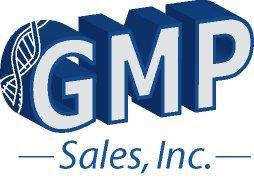Thermoforming Manufacturing:
Plastic Products
Thermoforming manufacturing is a versatile plastic processing technique used to create a wide range of products, from disposable containers to intricate plastic parts. Understanding the basics of thermoforming can provide valuable insights into the world of manufacturing, its advantages, and its financial benefits.
How Thermoforming Works
Thermoforming begins with a flat sheet of thermoplastic material, typically polystyrene, although various other plastics are also used. This sheet is heated until it becomes pliable and then stretched over a mold using vacuum pressure, air pressure, or mechanical force. Once the plastic cools and solidifies, it takes the shape of the mold, resulting in the final product.
Pros of Thermoforming:
1. Cost-Efficiency: Thermoforming is a cost-effective method, particularly for large-scale production. The tooling and fast cycle times make it an attractive choice for manufacturers.
2. Design Flexibility: It allows for intricate and complex designs with fine details, textures, and undercuts, offering creative freedom for product designers.
3. Fast Production: Thermoforming is a rapid manufacturing process, ideal for meeting tight production schedules and deadlines.
4. Material Efficiency: It minimizes material waste compared to other manufacturing methods, contributing to sustainability efforts.
5. Customization: Thermoforming offers excellent customization options, allowing for personalized products tailored to specific needs.
Cons of Thermoforming:
1. Limited Material Thickness: Thermoforming is generally suitable for thinner materials, which may not be ideal for heavy-duty applications.
2. Limited Mold Reusability: Molds can wear out over time, leading to additional tooling costs for replacement.
3. Limited Material Variety: Although versatile, thermoforming may not be the best choice for certain specialized materials or applications.
4. Uniform Wall Thickness Challenges: Achieving uniform wall thickness can be challenging, particularly in deep-draw parts.
5. Heat Sensitivity: Some materials may be sensitive to heat during the thermoforming process, which requires careful temperature control.
Thermoforming Usages with Polystyrene:
Polystyrene is a popular choice for thermoforming due to its affordability, versatility, and excellent transparency. It is commonly used to produce items like disposable cups, food containers, blister packaging, and even parts for various industries. Polystyrene thermoformed products are lightweight, impact-resistant, and offer excellent insulation properties.
Value Through Cost Efficiency: Financial benefits of thermoforming.
One of the significant financial benefits of thermoforming is its cost efficiency, material efficiency, and faster production times. This cost-effectiveness can lead to more affordable end products for consumers, making thermoformed goods an attractive choice for businesses and a potential cost-saving solution for various industries.
Thermoforming manufacturing here at GMP Sales Inc, especially when coupled with polystyrene, plays a vital role in producing cost-effective, versatile, and customizable plastic products. Understanding its advantages and limitations help the significance of this manufacturing process in various industries and recognize benefits through streamlined, cost-efficient production.


